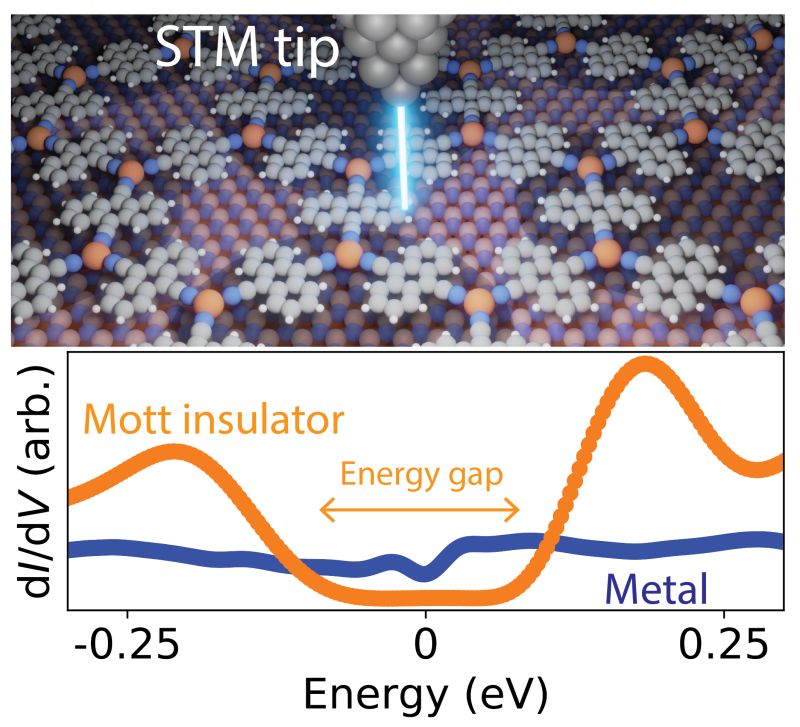Ben & Bernard’s work on the two-dimensional kagome metal-organic framework is out this week (26 April 2024) in Nature Comms.
It was fantastic to see interesting electronic properties emerge at relatively big energy scales for this sort of work, when we were finally able to get the 2d kagome MOF composed of Cu adatoms & DCA molecules, to self-assemble on insulating hexagonal boron nitride (hBN) supported by a Cu111 metallic substrate.
We teamed up with Ben Powell’s group at UQ for the many-body expertise required to understand the tunnel junction and substrate work function dependent modulations of the electronic gap in the language of Mott physics.

Lowe, B., Field, B., Hellerstedt, J. et al. Local gate control of Mott metal-insulator transition in a 2D metal-organic framework. Nat Commun 15, 3559 (2024). https://doi.org/10.1038/s41467-024-47766-8